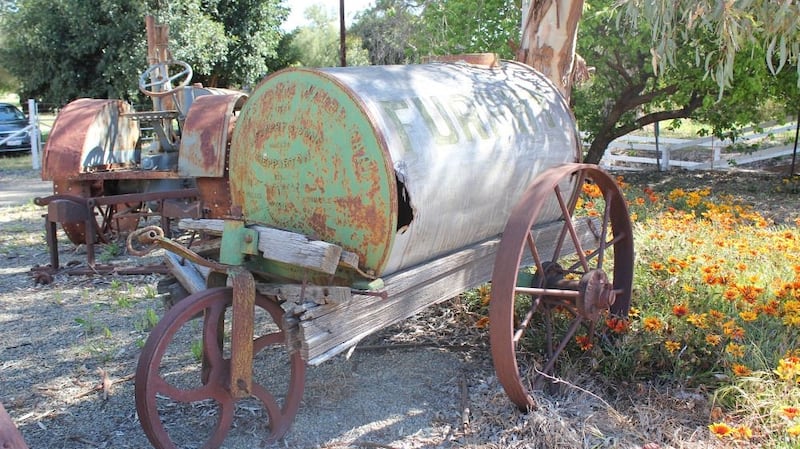Australia is a land of climate extremes. It is the driest inhabited continent and access to water is at a premium except, of course, during episodes of flooding rains. The need to collect water and deliver it as required provided an opportunity for a family with roots in Ireland. They were able to see that wheeled containers filled with water could provide a way of reviving parched crops and thirsty animals. In doing so, they also added a new term to Australia's vernacular. A "furphy", which was the family name, means an unreliable or misleading statement, and has been of particular use in this social media age.
John Furphy, an engineering blacksmith, was born on June 17th, 1842 at Moonee Ponds, Victoria. He was the eldest son of Samuel Furphy, farmer, and his wife Judith, née Hare. Furphy's parents had arrived from Co Armagh in 1841 as bounty immigrants; his father was then described as an agricultural servant and his mother as a dressmaker. John was educated first by his mother and then at government schools before doing an apprenticeship. He set up his own business supplying equipment to farms in central Victoria. In 1873 he relocated to Shepparton in Northern Victoria. He added a foundry to the firm's blacksmithing and wheelwright activities to extend the range of agricultural machinery produced by the company. A water cart was one of the new products he developed. It answered a pressing need by farmers to transport water to where it was needed on a farm.
The design of the cart was simple yet effective. Cast iron concave ends were manufactured in the foundry. A rolled barrel made from galvanized iron was slipped over the ends and a ring then heated and slipped over the outside of the barrel to provide a shrink fit upon cooling. Thus the tank was water tight. A homily was cast into the ends: Good Better Best, Never Let It Rest, Until your Good is Better, And your Better Best. The name “Furphy” was painted on the sides of the tank in prominent letters.

When the first World War broke out in 1914, Furphy water carts were used to bring water to Australian troops in Australia, Europe and the Middle East.. Soldiers would gather round the Furphy to get a drink and to have a chat, telling jokes and tall stories. That gave rise to the use of the word Furphy as a rumour or a false report which continues to the present day.
The two companies, Furphy Foundry and J Furphy and Sons remain after five generations in family ownership and continue to produce many products including watercarts, all of which proudly bear the name “Furphy” in prominent lettering.
The range of products has expanded considerably. When Little Creatures started production at its Geelong brewery, stainless steel fermentation tanks were supplied by J Furphy and Sons. The brewery was keen to make a beer with a local connection to Victoria. The name that was chosen for the new beer that was added to their repertoire was "Furphy Refreshing Ale". Thus the name brought to Australia from Co Armagh in 1841 lives on as the name of the foundry, as a word in the Australian vernacular and a popular beer.
This Extraordinary Emigrants article was written by Dr J Patrick Greene, CEO and museum director of EPIC The Irish Emigration Museum in Dublin's Docklands, an interactive museum that tells the story of how the Irish shaped and influenced the world











